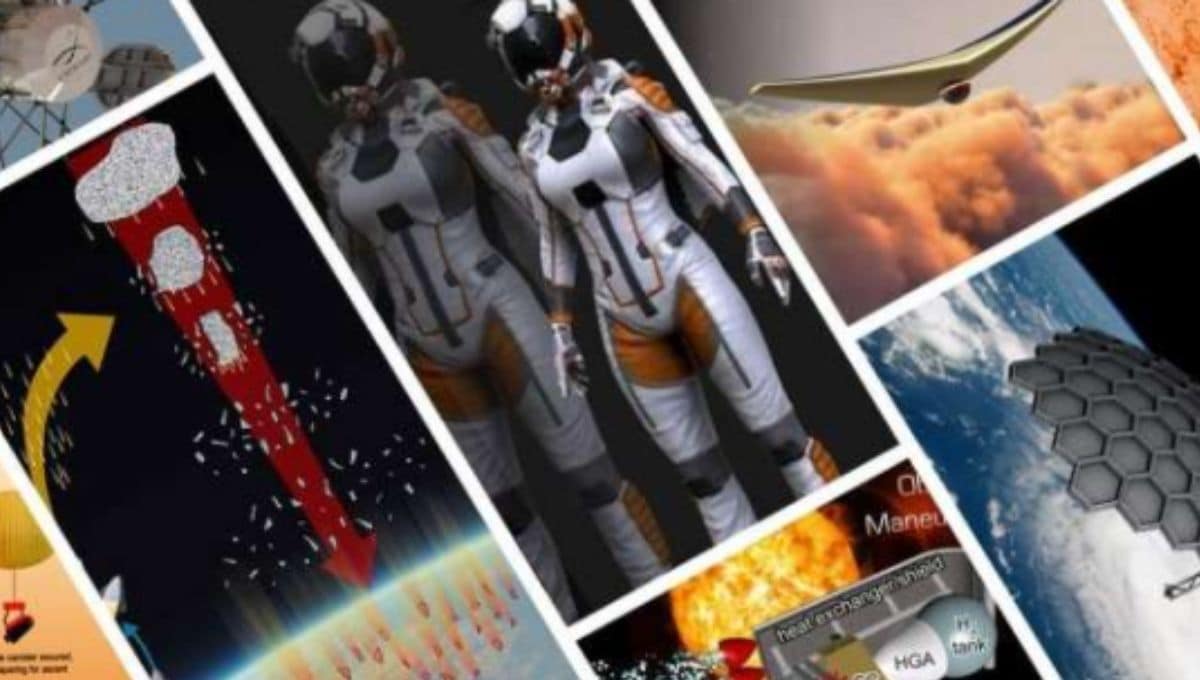A spaceman steps into the body scanner and hours later, he or she walks onto Mars wearing a spacesuit that was custom-designed breathing oxygen taken from Mars its abundant carbon dioxide atmosphere. On Venus an inflatable drone that resembles a bird flies through the sky, examining the atmosphere of Venus and its weather patterns. These ideas are currently science fiction however, they could eventually be a reality thanks to the latest round of grants from NASA.
The NASA Innovative Advanced Concepts (NIAC) program encourages exploration by providing early-stage research studies to test the potential of technologies to aid in the development of future Aeronautics as well as mission space. The new awards slate will grant a total amount worth of $5.1 million to seventeen scientists from nine states.

“As we set our sights on ever more challenging destinations for exploration with humans and robots, innovative ideas and future thinking will be critical to helping us reach new milestones,” said NASA Deputy Administrator Pam Melroy. “Concepts like those being studied with this new round of NIAC funding are helping us expand the scope of the possible so we can make it a reality.”
The chosen concepts comprise 12 new ideas for Phase I research and five Phase II awards that enable the researchers to pursue their research on new concepts. These projects are in the initial stages of development and therefore aren’t considered official NASA missions. The Phase I Fellows receive $175,000 for nine months of study, while the Phase II fellowships are awarded 600,000 per study over a period of two years.
NASA’s Mission
“NASA’s mission to explore the universe requires new technologies and new ways of doing things,” said Jim Reuter, associate administrator for NASA’s Space Technology Mission Directorate (STMD) at the headquarters of the agency in Washington. “Studying these creative ideas is the first step to turn science fiction into science fact.”
The Phase I programs include a new concept for the creation of an astronaut-controlled spacecraft that offers greater protection from radiation during long voyages than standard crewed spacecraft, a design for a totally silent electric aeroplane, as well as the concept of a spacecraft that harnesses the sun’s heat to accelerate it out of space at unimaginable speed.

John Mather, Nobel laureate and astrophysicist at NASA’s Goddard Space Flight Center in Greenbelt, Maryland, proposes the idea of helping humanity discover distant, Earth-like planets. A football-field-sized starshade in space could be placed in alignment with ground-based telescopes that block the light emitted by distant stars, permitting astronomers to look for indications of life in atmospheres of planets from different star constellations.
A proposal from Sara Seager of the Massachusetts Institute of Technology could aid scientists in studying a planet close to home: Venus. A probe could parachute into Venus’ atmosphere in order to take sample clouds and gases. The sample will be taken to Earth for scientists to examine for evidence of life in Venus’ atmosphere, one of the only possible environments it might be able to live in the otherwise scorching planet with high pressure.
“As in years past, our new group of NIAC fellows showcases the creativity and vision of the space community at large,” said Michael LaPointe, acting program director of NASA’s NIAC programme in NASA Headquarters.
The chosen Phase II projects include a concept for small-sized climbing robots to explore caves beneath the surface on Mars as well as a unique method to use nuclear power in spacecraft, and a design for a swarm of 3D printed micro-robots in the water that can explore the ocean worlds such as Enceladus, Europa, and Titan.
Phase II student Zac Manchester from Carnegie Mellon University will continue his research on a plan to create artificial gravity within space with a kilometre-sized rotating structure. After launch using a single rocket the structure envisioned will expand up to 150 times its initial size, creating a massive rotating space that will create a fake gravity equivalent to Earth’s gravity on certain portions in the construction.
The research teams selected for NIAC Phase I grants in 2022, their institutes, and the names of the proposals they submitted are:
- Darmindra Arumugam, NASA’s Jet Propulsion Laboratory in Southern California: Cryospheric Rydberg Radar
- Steven Barrett, Massachusetts Institute of Technology in Cambridge: Silent, Solid-State Propulsion for advanced Air Mobility Vehicles
- Jason Benkoski, Johns Hopkins University in Baltimore: Combined Heat Shield and Solar Thermal Propulsion System for an Oberth Maneuver
- Elena D’Onghia, University of Wisconsin-Madison CREW: Cosmic Radiation Extended Warding by using Halbach Torus Halbach Torus
- Bonnie Dunbar, Texas A&M University in College Station: The Spacesuit Digital Thread: 4.0 Manufacture of Custom High Performance Spacesuits for the Exploration of Mars
- Ivan Ermanoski, Arizona State University in Tempe: Breathing Mars Air: Portable and Stationary 2 Generation 2. Generation
- Philip Lubin, University of California, Santa Barbara: Pi–Terminal Defense for Humanity
- John Mather, NASA Goddard: Hybrid Observatory for Earth-like Exoplanets (HOEE)
- Marcin Pilinski, University of Colorado, Boulder: In-situ Neutral Optics Velocity Analyzer for Thermospheric Exploration (INOVATE)
- Jonathan Sauder, NASA’s Jet Propulsion Laboratory in Southern California: Starburst: A Revolutionary Under-Constrained , Adaptable deployable structure architecture
- Sara Seager, Massachusetts Institute of Technology in Cambridge: Venus Atmosphere and Cloud Particle Sample Return to Astrobiology
- Mahmooda Sultana NASA Goddard: SCOPE: ScienceCraft for Outer Planet Exploration
- The researchers who were selected to be awarded Phase II grants in 2022 the institutions they work at, as well as the names in their propositions are
- Javid Bayandor State University of New York at Buffalo: BREEZE: Bioinspired Ray for Extreme Environments and Zonal Exploration
- Zac Manchester Carnegie Mellon University in Pittsburgh, Pennsylvania: Space Structures of a Kilometer-Scale from one launch
- E. Joseph Nemanick, The Aerospace Corporation in El Segundo, California: Atomic Planar Power for Lightweight Exploration (APPLE)
- Marco Pavone, Stanford University in California: ReachBot: Small Robot to perform large-scale mobile manipulation tasks in Martian Cave environments
- Ethan Schaler, NASA JPL: SWIM: Sensing using Independent Micro-swimmers
